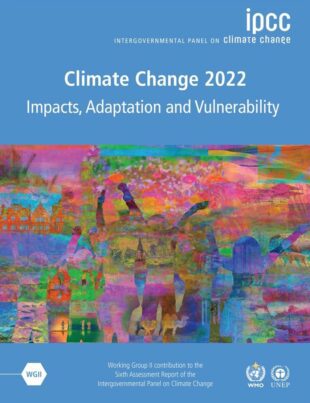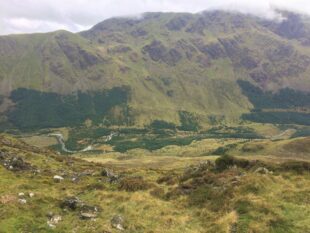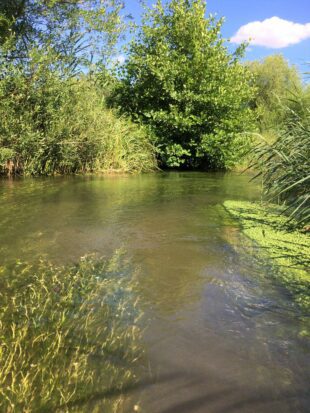Mike Morecroft
Principal Specialist, Climate Change at Natural England.
The Intergovernmental Panel on Climate Change is the United Nations body responsible for assessing the scientific evidence on climate change. Every 7-8 years it produces comprehensive ‘Assessment Reports’, which have been hugely influential over the last 30 years. The most recent one was published on 28 February and covers climate change impacts, vulnerability and adaptation.
I was one of its ‘Coordinating Lead Authors’, working with a fantastic international team of experts to write the chapter on Terrestrial and Freshwater Ecosystems and contributing to a cross-chapter paper on Mountains, the Technical Summary and Summary for Policy Makers (SPM). It’s been quite a journey to get to this point, starting over 3 years ago, involving three face-to-face meetings and innumerable meetings by Zoom and Teams across time zones and lots of reading, writing and reviewing.

This report is one part of a trilogy: the first was on climate science and came out last summer; the next is due in April and will cover climate change mitigation – how to reduce greenhouse gas emissions. Our latest report assesses the impacts that climate change is already having on natural and human systems, the risks it presents for the future and the options for adaptation to reduce the risks. The emphasis on adaptation has increased over the years and it is a substantial element of all chapters.
Adaptation has often had less attention than mitigation. However, we are already seeing many impacts of climate change – the evidence of this has increased substantially in the last decade – and approximately 3.3 to 3.6 billion people live in contexts that are highly vulnerable to climate change. Hundreds of local extinctions (extirpations) of species and at least two global extinctions have happened as a result of climate change, with risks to many more as the climate warms. There is therefore an urgent need to adapt to reduce these risks to both people and nature as much as we can.
There are a wide range of different adaptation options which are feasible and likely to be effective to at least some extent. For the ecosystems, resilience to climate change can be increased by protection and restoration of natural and semi-natural areas. Larger natural areas support larger populations of species that are more likely to survive through extreme climatic events, such as droughts and heatwaves. They also allow natural processes to operate in ways that support resilience, for example holding more water back in catchments. Reducing other pressures on ecosystems, such as from pollution and over- exploitation can also build resilience. There are places where species may persist longer because of locally cooler microclimates; focusing protection in these ‘refugia’, can potentially improve conservation outcomes.
Despite these opportunities, conservation will increasingly need to plan for changes that can’t be prevented. The report highlights the necessity for planning and managing change. This includes helping species move to new areas, both by direct translocation and by increasing the connectivity between natural areas.
Direct management interventions can protect species in some circumstances and there is an interesting case study of work by South African National Parks to help African penguins to survive. Through participating in the IPCC I have been able to see our work in Natural England in a wider context. We are ‘ahead of the game’ in terms of the science of climate change adaptation and also relatively proactive in planning for adaptation but given the extent of the degradation of our natural environment, we have a very long way to go in building resilience.

One of the key aspects of this report is the recognition of the close linkages between people, nature and climate. A headline message in Summary for Policy Makers is that ‘maintaining the resilience of biodiversity and ecosystem services at the global scale depends on the effective and equitable conservation of approximate 30 – 50% of Earth’s land, freshwater and ocean areas, including currently near natural ecosystems’. At the local level, restoring natural systems can reduce risks to people from a range of climatic hazards, including flood and wildfire and trees and other vegetation can provide natural cooling for cities.
There is increasing attention on these ‘Ecosystem-based Adaptation’ measures; an important aspect of what are sometimes termed ‘nature-based solutions’. They have good potential and can deliver many co-benefits but they need to be implemented carefully with local knowledge and involvement, as well scientific expertise. Going forward there is a need to ‘learn by doing’: trialling techniques, monitoring and evaluating their effectiveness.

The report also discusses the limits to adaptation – both ‘soft’ limits that arise from problems such as a lack of finance and governance obstacles and ‘hard’ limits, which are intrinsic to systems, such as the climatic limits within which species can survive. Adaptation will be more effective in reducing harm at lower levels of global warming, not least because many adaptation measures, including nature-based ones, become less effective at higher levels of global warming.
Adaptation cannot be pursued in isolation from mitigation, both are necessary to reduce risks. It is also the case that people will not be able adapt if they are not sufficiently resourced and empowered, so it is essential to address climate change, within the wider context of sustainable development. We use the term ‘Climate Resilient Development’ to encapsulate a joined-up approach to climate change adaptation and mitigation and sustainable development.
The last sentence of the Summary for Policy Makers reads ‘Any further delay in concerted anticipatory global action on adaptation and mitigation will miss a brief and rapidly closing window of opportunity to secure a liveable and sustainable future for all’. This isn’t an opinion; it is a statement of the evidence with ‘very high confidence’. The onus is on all of us, especially those of us with a disproportionate share of the world’s resources, to play our part in seizing that opportunity.
1 comment
Comment by Jl posted on
Brilliant, thank you so much, on Werneth Low our community based Environmental Group is helping species adapt allowing uplands wetlands to restore on the fields previously used for intensive farming . The local primary schools and communities are then involved in monitoring the progress of rare species. Especially ground nesting birds , Snipe, Skylark and Lapwing.